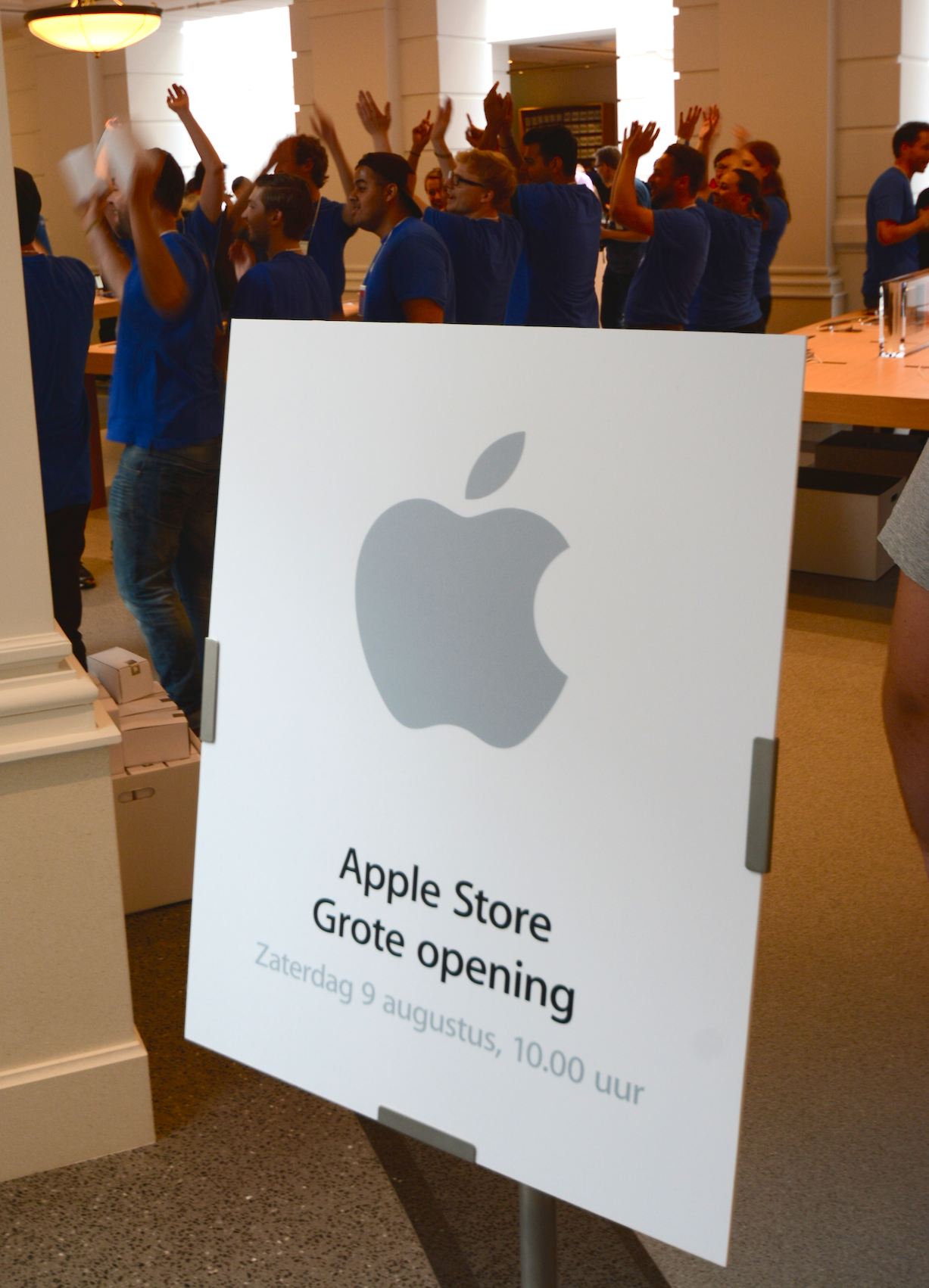Existing and upcoming iOS device screens and the metric system
▼ Have you ever noticed how the iPad has strange screen sizes? 9.7 and 7.9 inches. The same for the rumored new iPhone sizes: 4.7 and 5.5 inches. Turns out some of these screen sizes are nice, round numbers... in the metric system.
First a short metric system refresher for my American readers. It all begins with the meter (m). Long distances are measured in kilometers (1 km = 1000 m). Short distances are measured in centimeters (100 cm = 1 m) or millimeters (1000 mm = 1 m, 10 mm = 1 cm). A liter (l) is a volume the size of 10 by 10 by 10 cm, and a liter worth of water weighs 1000 grams, or a kilogram (kg, also just "kilo" in common parlance). The main thing you have to remember is that an inch is 2.54 cm or 25.4 mm.
Interestingly, on its English language web pages, Apple dutifully lists all the outward dimensions of the iPad Air both in inches/pounds and (tens of!) millimeters and grams. In other languages, only millimeters/grams are mentioned. Except for the screen. That's 9.7 inches, period. Even in French. The same thing for the iPad mini with its 7.9" screen.
Let's do some calculations:
| Screen diagonal | ||
| iPhone 4 | 3.5" x 2.54 = | 8.89 cm |
| iPhone 5 | 4" x 2.54 = | 10.16 cm |
| iPad Air | 9.7" x 2.54 = | 24.64 cm |
| iPad mini | 7.9" x 2.54 = | 20.07 cm |
| iPhone 6 small | 4.7" x 2.54 = | 11.94 cm |
| iPhone 6 big | 5.5" x 2.54 = | 13.97 cm |
Not so round. However, if we also take into consideration the pixel resolution and pixels per inch numbers that Apple publishes, things look slightly different:
| Resolution | PPI | Screen in | D in | px/cm | Screen cm | D cm | |
| iPhone 4 | 960x640 | 326 | 2.95x1.96 | 3.54 | 128 | 7.5x5 | 9 |
| iPhone 5 | 1136x640 | 326 | 3.48x1.96 | 4 | 128 | 8.88x5 | 10.19 |
| iPad Air | 2048x1536 | 264 | 7.76x5.82 | 9.69 | 104 | 19.69x14.77 | 24.62 |
| iPad mini | 2048x1536 | 326 | 6.28x4.71 | 7.85 | 128 | 16 x 12 | 20 |
(Screen in / Screen cm: screen height x width in inches / cm. D = screen diagonal.)
Conclusion: the iPhone and iPad mini use a pixel density that makes for nice round numbers for the display size in the metric system, with the original iPad being the odd man out. So what about the rumored 4.7" and 5.5" sizes for the iPhone 6? That would be 11.938 and 13.97 cm, respectively. Which probably means it's going to be 12 and 14 cm, or 4.72" and 5.51".
John Gruber's conjecture lands at 750 x 1334 for the small one. If that one has a 12 cm screen at 326 PPI = 128 pixels/cm, that comes out to:
| Resolution | PPI | Screen in | D in | px/cm | Screen cm | D cm | |
| iPhone 6 small | 1336 x 752 * | 326 | 4.11x2.31 | 4.72 | 128 | 10.46x5.88 | 12 |
Note that this is different from the 1366 x 768 result I got last week. I then used 10 cm for the iPhone 5 screen size, and assumed 4" → 4.7" actually meant 10 → 12 cm, a 20% increase. But the iPhone 5 screen is actually 10.2 cm, so a 20% increase in size would be 10.2 → 12.24 cm, which is 4.82" and not in the 4.65" - 4.74" range that would be rounded to 4.7". I think if Apple had wanted to stick with 326 PPI / 128 pixels/cm, they'd have gone for the extra 2.4 mm diagonal screen size, which only adds only 1.2 mm to the width of the screen but makes the pixel numbers work out much better.
I still think 1280 x 720 is the most likely resolution for a 12 cm iPhone 6, because it's a nice round number and allows for slightly bigger text for unupdated applications while still providing a reasonable number of extra pixels. Assuming the 14 cm version would use the same pixel density, that comes out to:
| Resolution | PPI | Screen in | D in | px/cm | Screen cm | D cm | |
| iPhone 6 small | 1280x720 | 311 | 4.11x2.31 | 4.72 | 122 | 10.46x5.88 | 12 |
| iPhone 6 big | 1488x840 * | 311 | 4.8x2.7 | 5.51 | 122 | 12.2x6.86 | 14 |
But we'll know soon enough.
* Rounded a bit to a number divisible by a power of two.
Permalink - posted 2014-08-26

 It looks like the introduction of the iPhone 6 is only a few weeks away. And if the rumors are to be believed, it's going to be bigger than the iPhone 5/5S/5C. People talk about 4.7 inches vs 4 inches for the iPhone 5 family, which I'll take as 12 cm vs 10 cm—a 20% increase.
It looks like the introduction of the iPhone 6 is only a few weeks away. And if the rumors are to be believed, it's going to be bigger than the iPhone 5/5S/5C. People talk about 4.7 inches vs 4 inches for the iPhone 5 family, which I'll take as 12 cm vs 10 cm—a 20% increase.

